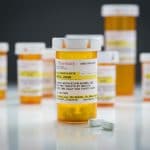IV Xanax Abuse | Dangers Of Shooting Xanax
Xanax, the brand name for alprazolam, is one of the most widely prescribed benzodiazepines. Injecting, also referred to as “shooting,” can intensify the effects but increases the risk of a life-threatening overdose.
Shooting drugs also puts you at risk of developing health problems, including collapsed veins, infections, and overdose. In addition, benzodiazepines are addictive and long-term drug use can lead to dependence and addiction.
Effects Of Shooting Xanax
Benzodiazepines, also known as “benzos,” are prescription drugs used to treat anxiety and panic disorders.
Benzos also include:
- Valium (diazepam)
- Ativan (lorazepam)
- Klonopin (clonazepam)
Xanax and other benzos can be very effective when used as prescribed. However, many people also shoot or snort Xanax to produce more rapid effects. Shooting Xanax allows the drug to enter your bloodstream almost immediately, which can produce stronger anxiety-reducing effects.
However, this method of drug abuse can also increase unwanted side-effects, including drowsiness, lightheadedness, and decreased blood pressure.
Other common side-effects of Xanax include:
- dizziness
- impaired concentration
- dry mouth
- irritability
- problems urinating
Dangers Of Shooting Xanax
Intravenous use exposes your body to a wide-range of health risks that can cause severe or life-threatening consequences.
Overdose
Xanax tablets are meant to be taken orally and absorbed in the liver, via the digestive tract. Intravenous use causes the drug to bypass the liver and directly enter the bloodstream, which can lead to a fatal overdose.
According to the National Library of Medicine, benzos are commonly abused alongside opioids.
Opioids, like benzos, are central nervous system depressant drugs that slow breathing and heart rate. Combining these two drugs increases the risk of overdose.
An overdose is a medical emergency. Be aware of the following signs associated with a Xanax overdose:
- excessive sedation
- loss of consciousness
- confusion
- impaired coordination
- shallow breathing
Combining Xanax with other depressants, including alcohol, barbiturates, and tranquilizers, can increase the risk of a fatal overdose.
Vein Damage
Frequently injecting drugs, especially with dull needles, can irritate and cause scarring along the site of injection. Repeated injection can damage veins and cause them to collapse or become blocked, which increases the risk of blood clots.
Infections
Infections can occur from frequent injection in the same area or from using contaminated needles. Germs can live in the water you use to mix with the drug, on the equipment you use to inject, and on the surface of the skin.
Dangerous infections can spread to the brain, spine, blood, heart, and bones. If left untreated, these infections can cause amputation, paralysis, blindness, organ damage, and death.
The following signs of infection can help you determine if you may need immediate medical care:
- abscess (puss-filled skin infection)
- pain at the injection site
- fever
- heart damage
- stroke
- dizziness
Sharing equipment is also dangerous and can spread infections like HIV and hepatitis C. Both infections can cause abdominal pain, fever, and fatigue. Hepatitis also affects the liver and can cause jaundice (yellowing of the eyes and skin).
Substance Use Disorder (SUD)
Long-term Xanax abuse puts you at an increased risk of physical dependence, which can lead to a drug addiction. Also referred to as a substance use disorder, addiction can cause uncontrollable use, regardless of the consequences.
Addiction and dependence are also associated with withdrawal symptoms if you stop Xanax use too quickly.
Withdrawal symptoms may include:
- seizures
- tremors
- cravings
- anxiety
- insomnia
- blurred vision
- muscle pain
- impaired concentration
Xanax Addiction Treatment
If you or a loved one is struggling with substance abuse, treatment programs offer several levels of care that may include detox, inpatient rehab, and outpatient programs.
Treatment options include a wide-range of comprehensive services, including behavioral therapy and individual counseling. These services are incorporated into individualized treatment plans that fit your unique needs.
To learn about our outpatient treatment options, please contact Northeast Addictions Treatment Center today.
Sources
- Centers For Disease Control And Prevention (CDC) — Injecting Drugs Can Give You Deadly Infections
- National Library Of Medicine — Impact Of Injection Drug Use On Distribution And Severity Of Chronic Venous Disorders
- National Library Of Medicine — The Epidemiology Of Benzodiazepine Misuse: A Systematic Review
- National Library of Medicine: MedlinePlus — Alprazolam
Written by
Northeast Addition Editorial Team
©2024 Northeast Addition Center | All Rights Reserved
This page does not provide medical advice.




